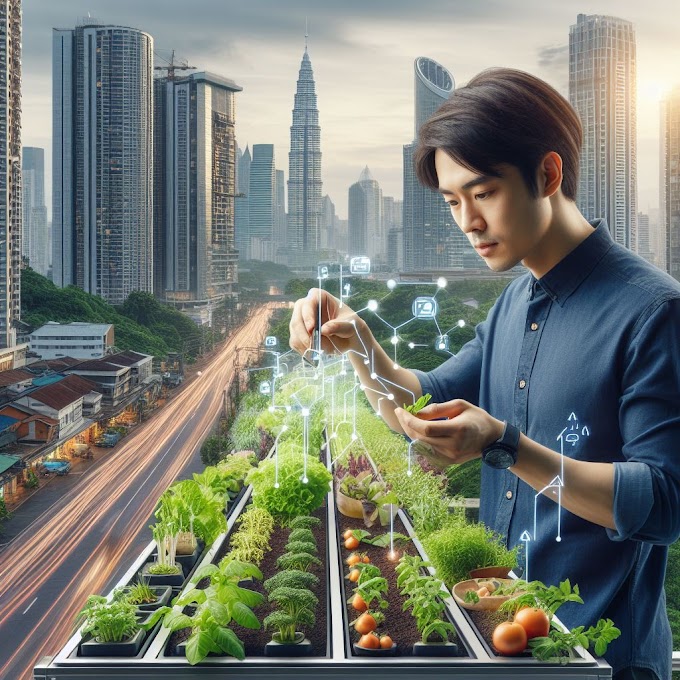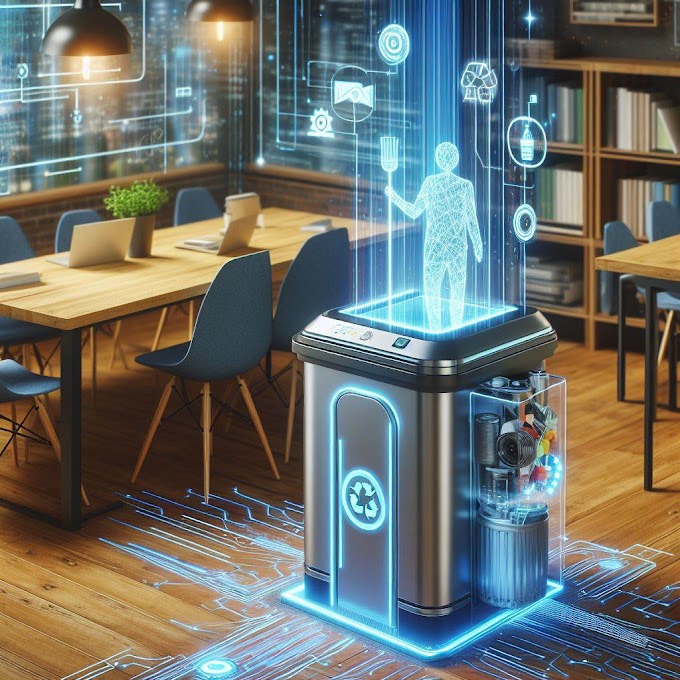بالتأكيد! إليك فكرة جديدة لمنتج يمكنك إنتاجه وتصنيعه في المستقبل:
"نظام الزراعة الحضرية الذكية"
يعد نظام الزراعة الحضرية الذكية حلاً مبتكرًا مصممًا لتمكين سكان المناطق الحضرية من زراعة منتجاتهم الطازجة في مساحات محدودة، مثل الشقق أو البيئات الحضرية الصغيرة. فهو يجمع بين التكنولوجيا الذكية والإدارة الفعالة للموارد والممارسات الزراعية المستدامة. فيما يلي بعض الميزات الرئيسية لهذه الفكرة الجديدة:
1. وحدات الزراعة العمودية: يشتمل النظام على وحدات زراعة عمودية يمكن تركيبها بسهولة في المساحات الداخلية. تستخدم هذه الوحدات المساحة الرأسية بكفاءة، مما يسمح للمستخدمين بزراعة مجموعة متنوعة من المحاصيل في مساحة صغيرة.
2. الزراعة المائية أو الزراعة الهوائية: يستخدم نظام الزراعة طرق الزراعة بدون تربة مثل الزراعة المائية أو الزراعة الهوائية. تستخدم هذه التقنيات الماء الغني بالمغذيات أو الرذاذ لتوصيل العناصر الغذائية الأساسية مباشرة إلى جذور النباتات، مما يزيد من النمو ويقلل من استخدام المياه.
3. الإضاءة الذكية والتحكم بالمناخ: يتضمن النظام أنظمة إضاءة ذكية توفر الطيف المثالي وشدة الضوء لنمو النبات الأمثل في المراحل المختلفة. وتضمن ميزات التحكم في المناخ، مثل أجهزة استشعار درجة الحرارة والرطوبة، والتهوية، وأنظمة الري الآلية، ازدهار النباتات في بيئة خاضعة للرقابة.
4. تكامل إنترنت الأشياء: يتكامل نظام الزراعة مع إنترنت الأشياء (IoT)، مما يسمح للمستخدمين بمراقبة مزارعهم الحضرية والتحكم فيها عن بعد باستخدام تطبيق الهاتف المحمول أو بوابة الويب. يمكنهم ضبط المعلمات مثل جداول الإضاءة، ومستويات العناصر الغذائية، ودورات الري، مما يضمن صحة النبات المثالية.
5. الإدارة الآلية للمغذيات: يشتمل النظام على جرعات ومراقبة آلية للمغذيات، مما يضمن حصول النباتات على التوازن الصحيح من العناصر الغذائية الأساسية. يمكن للمستخدمين تتبع مستويات العناصر الغذائية في الوقت الفعلي وتلقي التنبيهات عند الحاجة إلى تعديلات.
6. تحليل البيانات والتوجيه: يقوم نظام الزراعة الذكية بجمع وتحليل البيانات المتعلقة بنمو النبات والظروف البيئية ومستويات المغذيات. فهو يوفر للمستخدمين رؤى قيمة وتوصيات مخصصة لتحسين إنتاج المحاصيل، وتقليل هدر الموارد، واستكشاف أي مشكلات قد تنشأ وإصلاحها.
7. الممارسات المستدامة: يعزز نظام الزراعة الحضرية الاستدامة من خلال استخدام تقنيات إدارة الموارد الفعالة. ويتضمن آليات لتوفير المياه، مثل إعادة تدوير المياه وإعادة استخدامها داخل النظام، ويشجع استخدام الأسمدة العضوية وطرق مكافحة الآفات.
ومن خلال تمكين سكان المناطق الحضرية من زراعة منتجاتهم الطازجة، يعمل نظام الزراعة الحضرية الذكية على تعزيز الاكتفاء الذاتي الغذائي، ويقلل من البصمة الكربونية، ويساهم في بيئة حضرية أكثر صحة واستدامة.
تذكر أن تنفيذ هذه الفكرة سيتطلب المزيد من البحث والتطوير والتعاون مع خبراء في الزراعة والتكنولوجيا الذكية والممارسات المستدامة.
Certainly! Here's a new idea for a product that you could potentially produce and manufacture in the future:
"Smart Urban Farming System"
The Smart Urban Farming System is an innovative solution designed to enable urban dwellers to grow their own fresh produce in limited spaces, such as apartments or small urban environments. It combines smart technology, efficient resource management, and sustainable farming practices. Here are some key features of this new idea:
1. Vertical Farming Modules: The system incorporates modular vertical farming units that can be easily installed in indoor spaces. These units utilize vertical space efficiently, allowing users to grow a variety of crops in a compact footprint.
2. Hydroponics or Aeroponics: The farming system employs soilless cultivation methods such as hydroponics or aeroponics. These techniques use nutrient-rich water or mist to deliver essential nutrients directly to the plants' roots, maximizing growth and minimizing water usage.
3. Smart Lighting and Climate Control: The system includes smart lighting systems that provide the ideal spectrum and intensity of light for optimal plant growth at different stages. Climate control features, such as temperature and humidity sensors, ventilation, and automated irrigation systems, ensure that plants thrive in the controlled environment.
4. IoT Integration: The farming system integrates with the Internet of Things (IoT), allowing users to remotely monitor and control their urban farms using a mobile app or web portal. They can adjust parameters such as lighting schedules, nutrient levels, and irrigation cycles, ensuring optimal plant health.
5. Automated Nutrient Management: The system incorporates automated nutrient dosing and monitoring, ensuring that plants receive the right balance of essential nutrients. Users can track nutrient levels in real-time and receive alerts when adjustments are required.
6. Data Analytics and Guidance: The smart farming system collects and analyzes data on plant growth, environmental conditions, and nutrient levels. It provides users with valuable insights and personalized recommendations to optimize crop production, reduce resource wastage, and troubleshoot any issues that may arise.
7. Sustainable Practices: The urban farming system promotes sustainability by utilizing efficient resource management techniques. It incorporates water-saving mechanisms, such as recycling and reusing water within the system, and encourages the use of organic fertilizers and pest control methods.
By enabling urban residents to grow their own fresh produce, the Smart Urban Farming System promotes food self-sufficiency, reduces carbon footprint, and contributes to a healthier and more sustainable urban environment.
Remember, implementing this idea would require further research, development, and collaboration with experts in agriculture, smart technology, and sustainable practices.










0 تعليقات